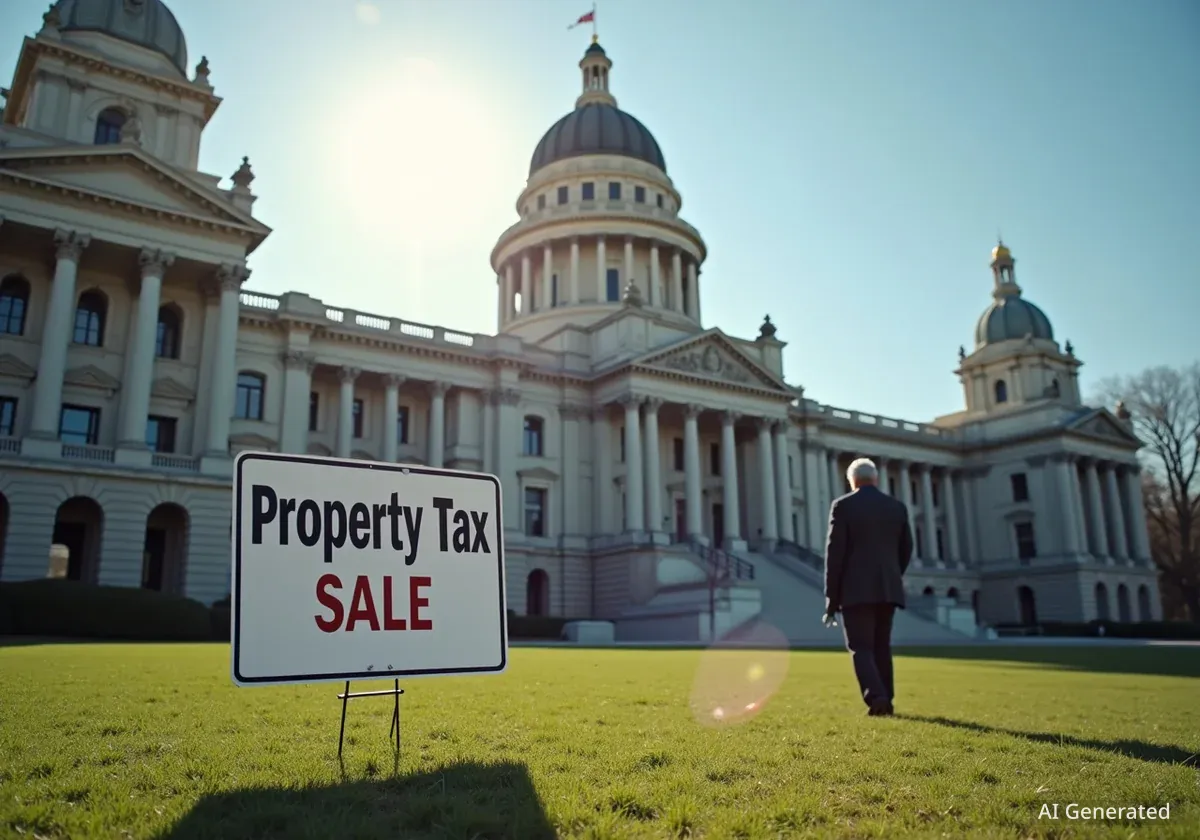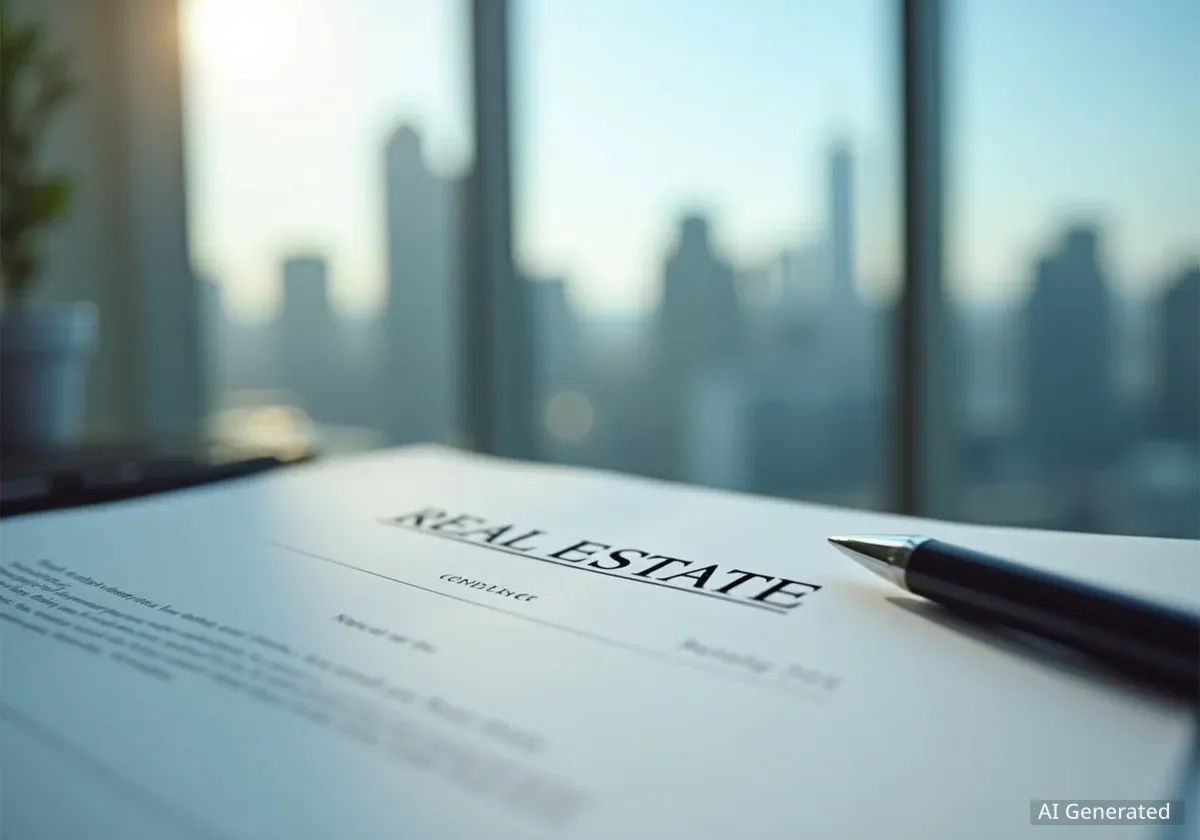A contentious Los Angeles tax on high-value property sales, known as Measure ULA, has become the focal point of a new statewide campaign to limit local taxes. The Howard Jarvis Taxpayers Association is leading an effort to place a measure on the November 2026 California ballot that would significantly restrict the ability of cities and counties to raise revenue through real estate transfer taxes and citizen-led initiatives.
The proposed constitutional amendment seeks to cap property transfer taxes and increase the voter approval threshold for certain local tax measures from a simple majority to two-thirds. If successful, the initiative could reduce municipal revenues by billions of dollars annually, reshaping local government finance across the state.
Key Takeaways
- A new statewide ballot initiative for November 2026 aims to cap property transfer taxes and raise the voting threshold for citizen-led special taxes.
- The campaign, led by the Howard Jarvis Taxpayers Association, uses Los Angeles's Measure ULA as a prime example of what it seeks to prevent.
- Measure ULA, passed in 2022, has generated over $830 million for housing and homeless services but is blamed by critics for slowing new apartment construction.
- If the statewide measure passes, California cities could face annual revenue losses estimated between $2 billion and $3 billion.
The Role of Measure ULA
In 2022, Los Angeles voters approved Measure ULA with 58% support. The measure established a new tax structure for property sales, adding a 4% tax on transactions between $5 million and $10 million and a 5.5% tax on those exceeding $10 million. Sales below these thresholds remain taxed at a much lower rate of about 0.5%.
Since its implementation in 2023, Measure ULA has become a significant funding source for Los Angeles, raising approximately $830 million. These funds are designated for affordable housing projects, rent subsidies for low-income residents, and legal aid for tenants at risk of eviction. It represents the largest single source of funding for the city's efforts to address homelessness.
However, the tax has faced strong opposition. Critics argue that its application extends beyond luxury homes to include commercial, industrial, and multifamily properties. This, they claim, has negatively impacted new housing development in a city with a severe housing shortage.
Economic Impact Studies
Several academic studies have examined the effects of Measure ULA. One report from UCLA and the Rand Institute estimated the tax led to a reduction of 1,910 new apartments annually. Another study by researchers at Harvard, UC Irvine, and UC San Diego suggested that a decline in property sales and associated tax collections offset as much as 63% of the revenue generated by the transfer tax.
Supporters of the measure have contested these findings. They point out that the program is only now beginning its first major distribution of funds, with nearly $400 million slated for allocation, which could spur affordable housing construction.
A Statewide Tax-Limiting Proposal
The debate over Measure ULA has provided momentum for a broader, statewide campaign. The Howard Jarvis Taxpayers Association, an influential anti-tax group, is now gathering signatures for a ballot measure intended for the November 2026 election.
"Putting a lid on both citizen-initiated tax measures and high transfer taxes is something that we have always had as a priority," said Rob Lapsely, president of the California Business Roundtable. "And then suddenly, along came Measure ULA."
The proposed initiative has two primary objectives:
- Cap Real Estate Transfer Taxes: It would limit transfer tax rates to approximately one-twentieth of one percent (around 0.05%) of a property's value. This is significantly lower than the rates in cities like Los Angeles and Santa Monica, where the highest rates are over one hundred times this proposed cap.
- Raise Voter Thresholds: It would require a two-thirds majority vote to pass local "special" tax measures proposed by citizens' campaigns. Currently, these measures can pass with a simple majority of over 50%.
The 'Upland Loophole'
The effort to raise the voter threshold targets a legal precedent set by the California Supreme Court in 2017. In a case involving the city of Upland, the court ruled that special taxes placed on the ballot through citizen signature campaigns only needed a simple majority to pass, rather than the previously assumed two-thirds threshold.
Since that ruling, California voters have approved dozens of such measures for schools, parks, and housing services. Business groups and anti-tax advocates refer to this as the "Upland loophole" and have been working to close it.
Potential Financial Consequences for Cities
The passage of the statewide measure would have significant financial implications for local governments. According to an analysis commissioned by the League of California Cities, municipalities could lose between $2 billion and $3 billion in revenue each year.
The impact would be felt in cities that have recently increased their transfer taxes, such as Los Angeles and Santa Monica, which use the revenue for housing and homelessness programs. It would also affect cities that rely on these taxes to support their general budgets.
Case Study: Berkeley
The City of Berkeley, for example, stands to lose between $33 million and $63 million annually, according to the League's analysis. This loss would represent between 15% and 30% of the city's general fund, potentially leading to significant cuts in public services.
The measure would not only prevent future tax increases but also roll back existing ones. Any parcel taxes currently in effect that were approved by less than a two-thirds majority would be nullified.
A Long-Running Political Battle
This initiative is the latest development in a political conflict over taxation in California that dates back to the passage of Proposition 13 in 1978. That landmark measure capped property taxes and established strict limits on the ability of state and local governments to raise new revenue.
An earlier attempt by business groups to pass a similar tax-limiting measure was struck from the 2024 ballot by the California Supreme Court, which deemed it too substantial of a change to be enacted through a ballot initiative. The current version is more narrowly focused to avoid a similar legal challenge.
The political maneuvering continues, with state legislators placing a counter-measure on the 2026 ballot. This legislative measure would require any future initiative that seeks to raise voter thresholds—like the Howard Jarvis proposal—to pass by that same higher threshold itself. This complex political strategy sets the stage for a major electoral showdown over the future of local taxation in California.





